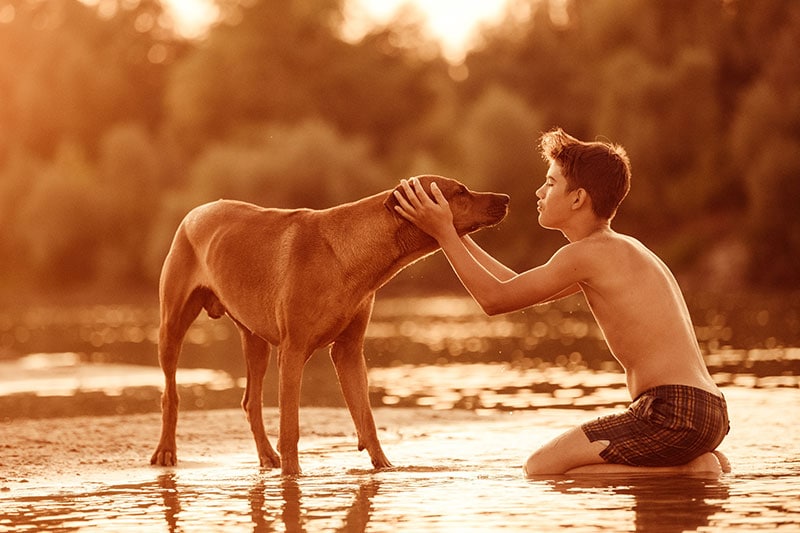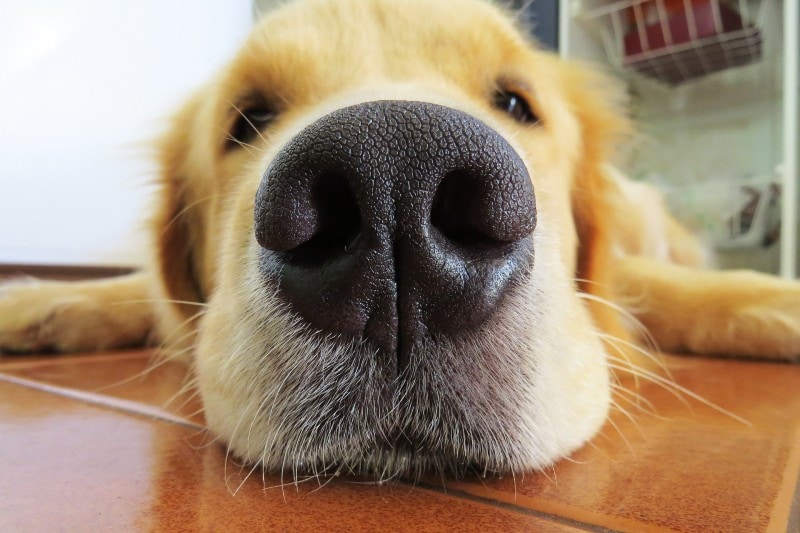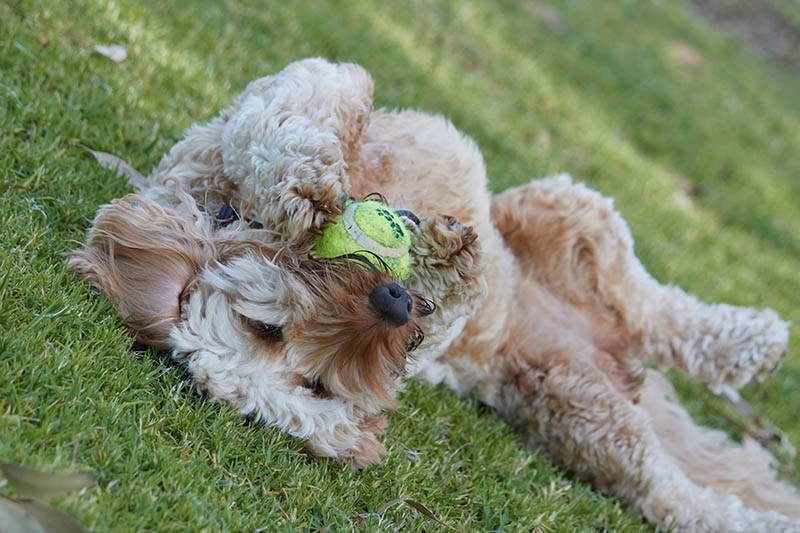
If you’ve noticed your dog becoming anxious around other people, sticking close by you wherever you go, or becoming uncomfortable in certain situations, you might wonder if they’re not as confident as they could be. A lack of confidence in dogs is more common than you might think; some breeds are naturally more confident (like the Labrador Retriever), while others tend to be shyer.
Fortunately, there are games and activities that you can do with your pup to enable them to build confidence and feel secure! In this article, we discuss seven confidence-boosting games, giving you the tools to help your dog feel bold.

Top 8 Confidence-Building Games for Dogs
1. Positive-Reinforcement Training Games


Training your dog is one of the best things you can do to help boost their confidence. Playing and learning come naturally to canines, so having lots of positive interactions and playing with your dog can strengthen the bond between you.
This, in turn, will empower your pup to use those skills when interacting with the world around them. Training them with easy-to-learn tricks like a high-five or spin is a great way to boost confidence. Each time they get it right, they’ll feel good, and positive reinforcement from you will further amplify this effect!
2. Fetch
Fetch is a classic game played by dogs everywhere and is something that comes very naturally to most of them. Interactive and rewarding games like fetch will strengthen the bond between you and can be a great confidence booster.
Rewarding your dog and praising them for bringing back their “prey” will boost their mood and help them feel accomplished by catching and retrieving it. Remember that some dogs like to fetch toys more than others, so discovering your pup’s “toy drive” will give them an extra rewarding experience.
3. Nose Work (Find the Treat)


Nose work games like “find the treat” are a great way to get your dog moving and boost their confidence. Not only will they get to flex and hone sniffing skills that come naturally to them, but the mental stimulation and physical exercise they’ll get will also keep them happy and calm. Working together means you’ll build on the bond between you, and you can offer verbal praise (alongside the treats they find) to help them feel great!
A game of hide the treat can be as simple or as complex as you want and involves hiding a treat in a room your dog is not in (such as behind or underneath something) and allowing them to sniff it out. You can start easy by allowing them to see you placing the treats, and you can progress from there at your pup’s pace.
4. Touch-Training Games
Touch-training games teach your dog to follow your command and hit their nose against a target, usually your hand or another object. This game is a great way to boost your dog’s confidence in various situations, as it improves focus and reduces their vigilance toward distractions.
It also helps them feel less nervous about approaching hands, which is invaluable when teaching them to be confident around strangers! Touch training is easy to start: Simply hold a treat in your hand and allow your dog to sniff it. As soon as they touch your hand, give them the treat! Repeat this (with or without a clicker), and you can begin introducing the “touch” command.
5. Free-Shaping Games
Free shaping is a training and confidence-building technique that enables your dog to interact with their environment and learn new skills without worrying about being wrong. Free shaping encourages your dog to be bold and explore, and you can shape their behavior in a series of smaller steps.
This ultimately leads to a rewarding and confidence-boosting experience for your pup and a better-behaved dog for you! An example of this would be training your dog to go underneath an object. You’ll give them a treat when they perform a desired behavior, such as sitting or lying next to the object and ignoring any other behavior.
6. Walkie-Talkie
Using a walkie-talkie is a great way to ensure that your dog is tuned in to you if they’re less confident than you’d like them to be. The constant checking in and reconnecting it also builds confidence. Training collars with walkie-talkie functions enable you to talk to your pup when you allow them to run freely.
7. Exploring


Allowing your dog to explore their environment without fear of reprimand is a great way to help them build their confidence. You can use boxes, toys, paper, or anything else your pup might find interesting (and is safe for them to be around). You might reward them for sticking their nose in a paper bag or turning a box over; the trick is to be there with them to give them bravery and security to explore!
8. The Engage/Disengage Game
The engage/disengage game is a great way to help dogs build confidence while teaching them to put their focus on you whenever they encounter a trigger. The result is a reduction of a dog’s stress or reactivity around different triggers as they learn the skill of self-interruption. This ability to self-interrupt and disengage is similar to the practice of mindfulness; it provides the dogs with the skills to shift their focus by the opportunity to get reinforcement.

What Does a Confident Dog Look Like?
Confident dogs will display confident and assertive body language, similar to how nervous dogs display nervous and sometimes placating or threatening behavior. A confident dog will most likely display the following body language and behavior:
- Holding their tail high
- Making eye contact
- Wiggling or wagging tail
- Displaying a happy expression
Confident dogs often surge forward to greet people or other animals without fear, whereas nervous dogs may stay closer to their owners.

Conclusion
Playing confidence-building games with your dog helps them face the world with a bolder outlook and navigate certain situations in a much more pleasant and calm way. Most of the games we listed are also great opportunities to bond with your pup, so try a few and see which you and your dog enjoy the most!
Featured Image Credit: Stenko Vlad, Shutterstock




